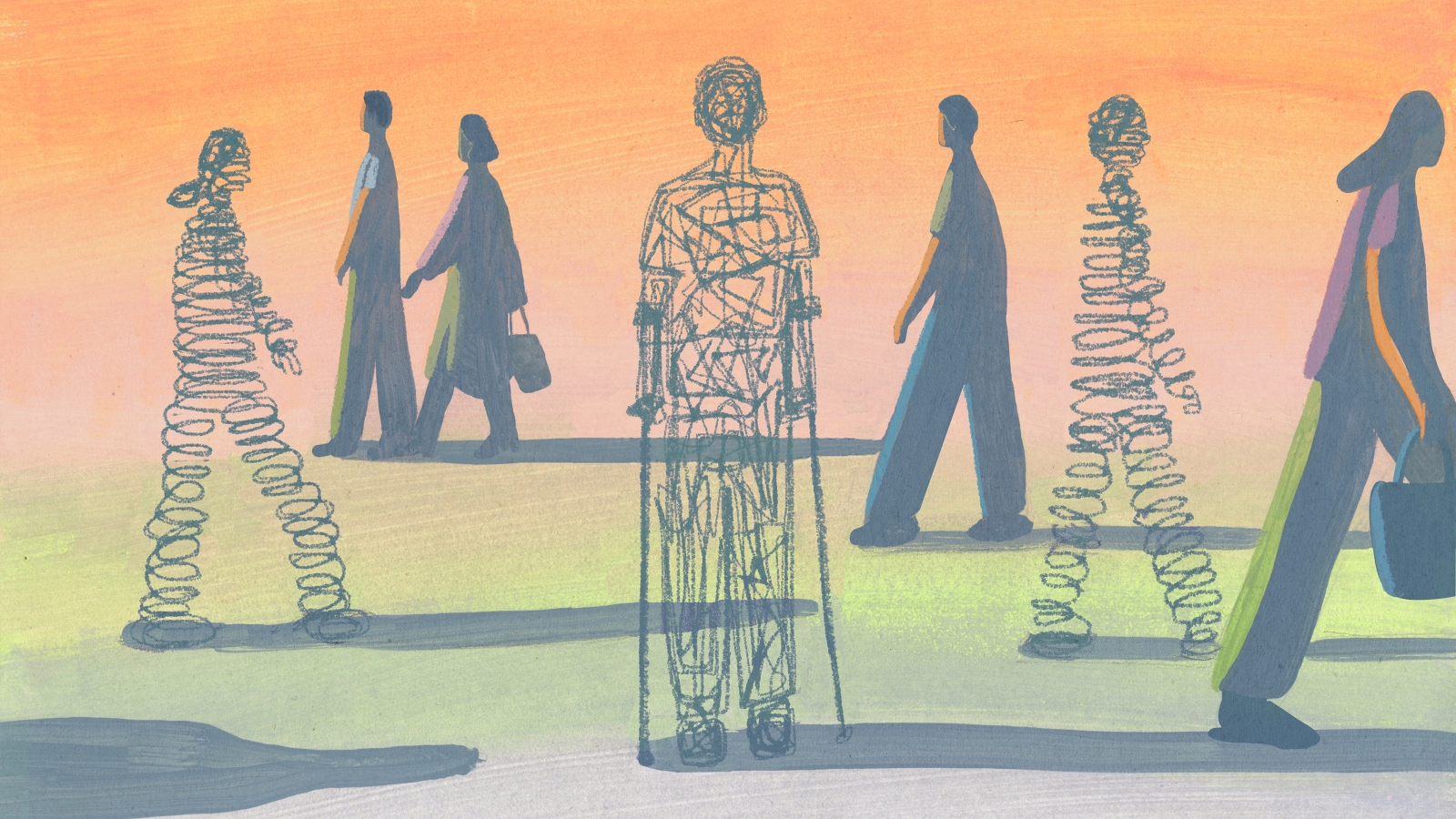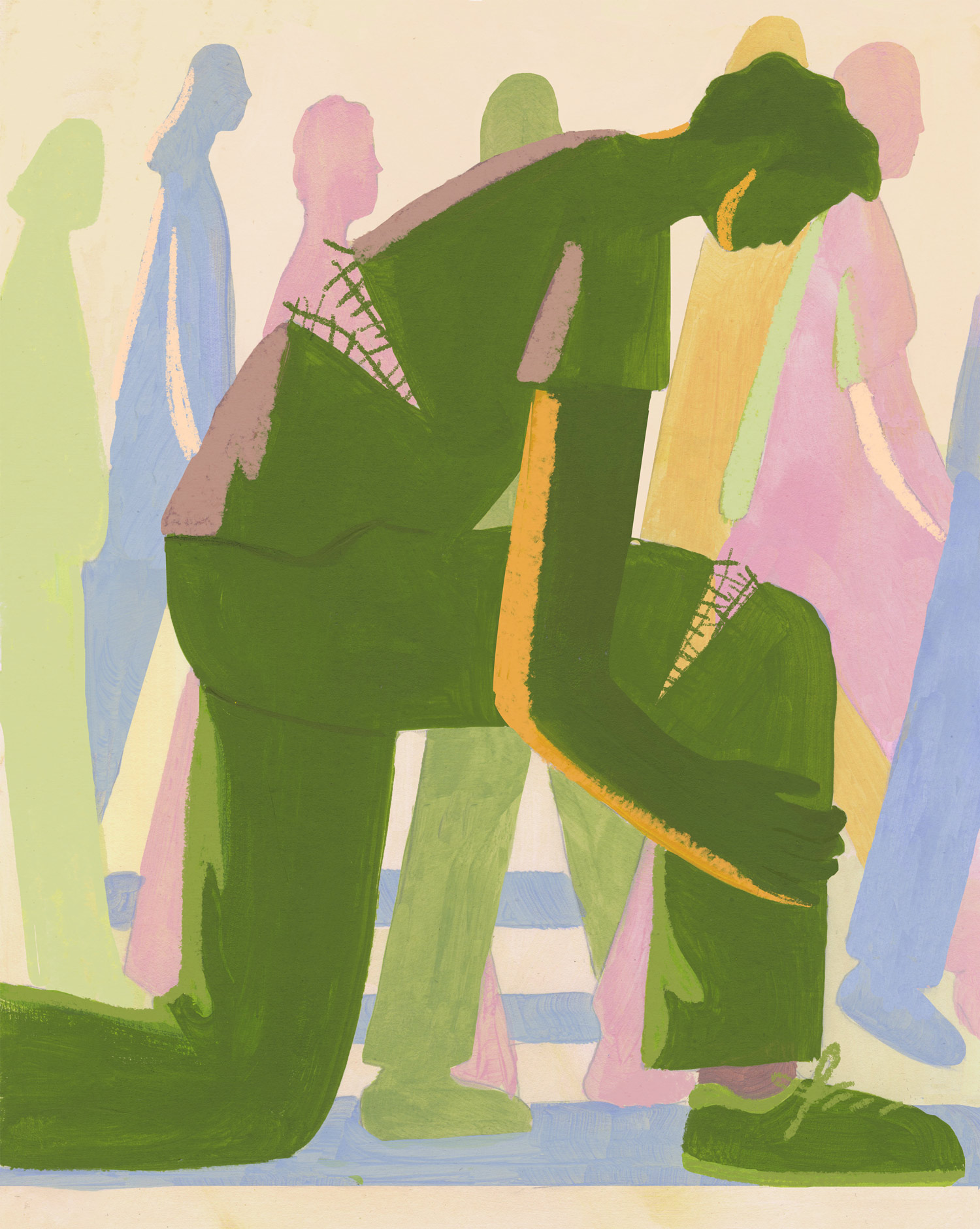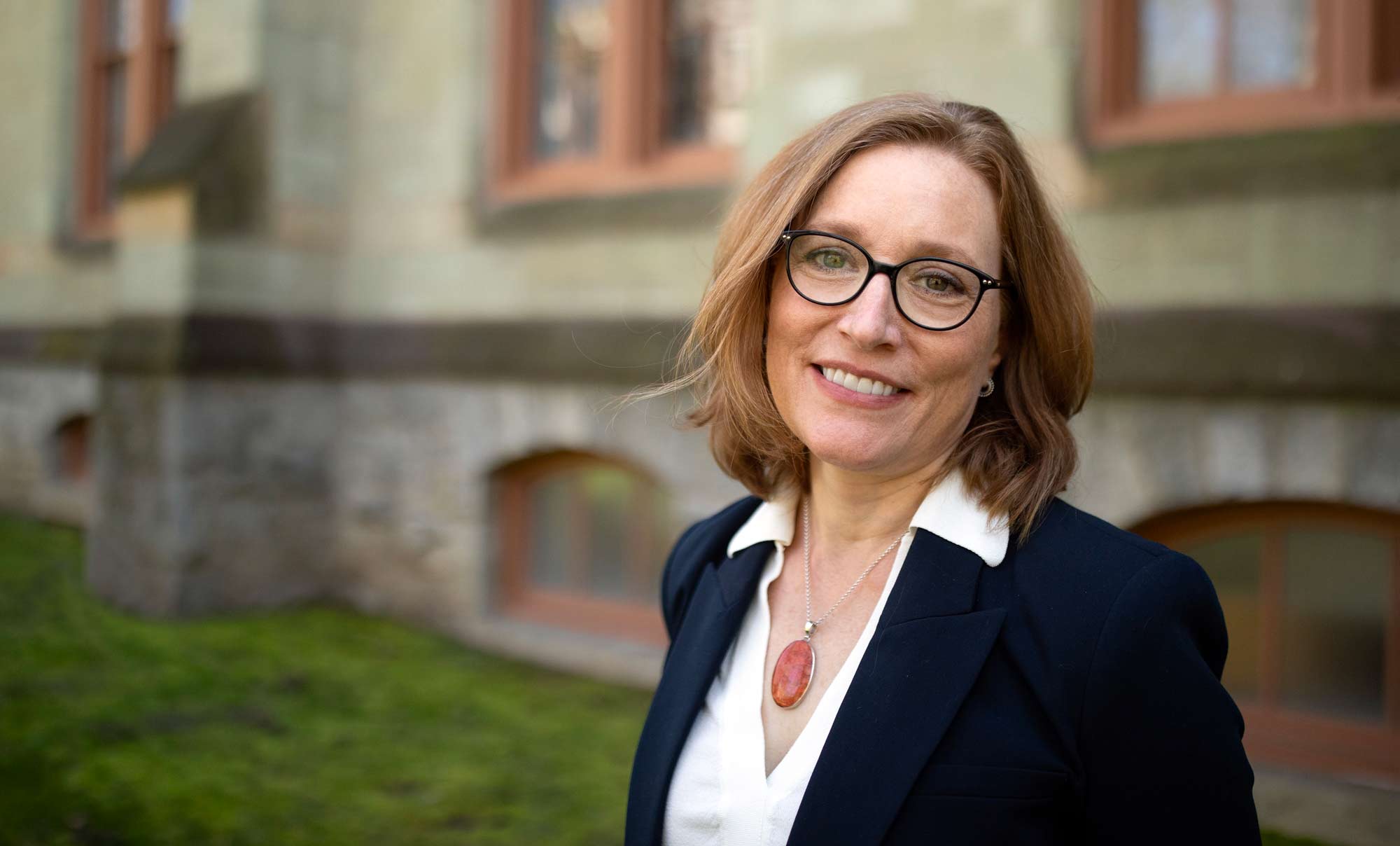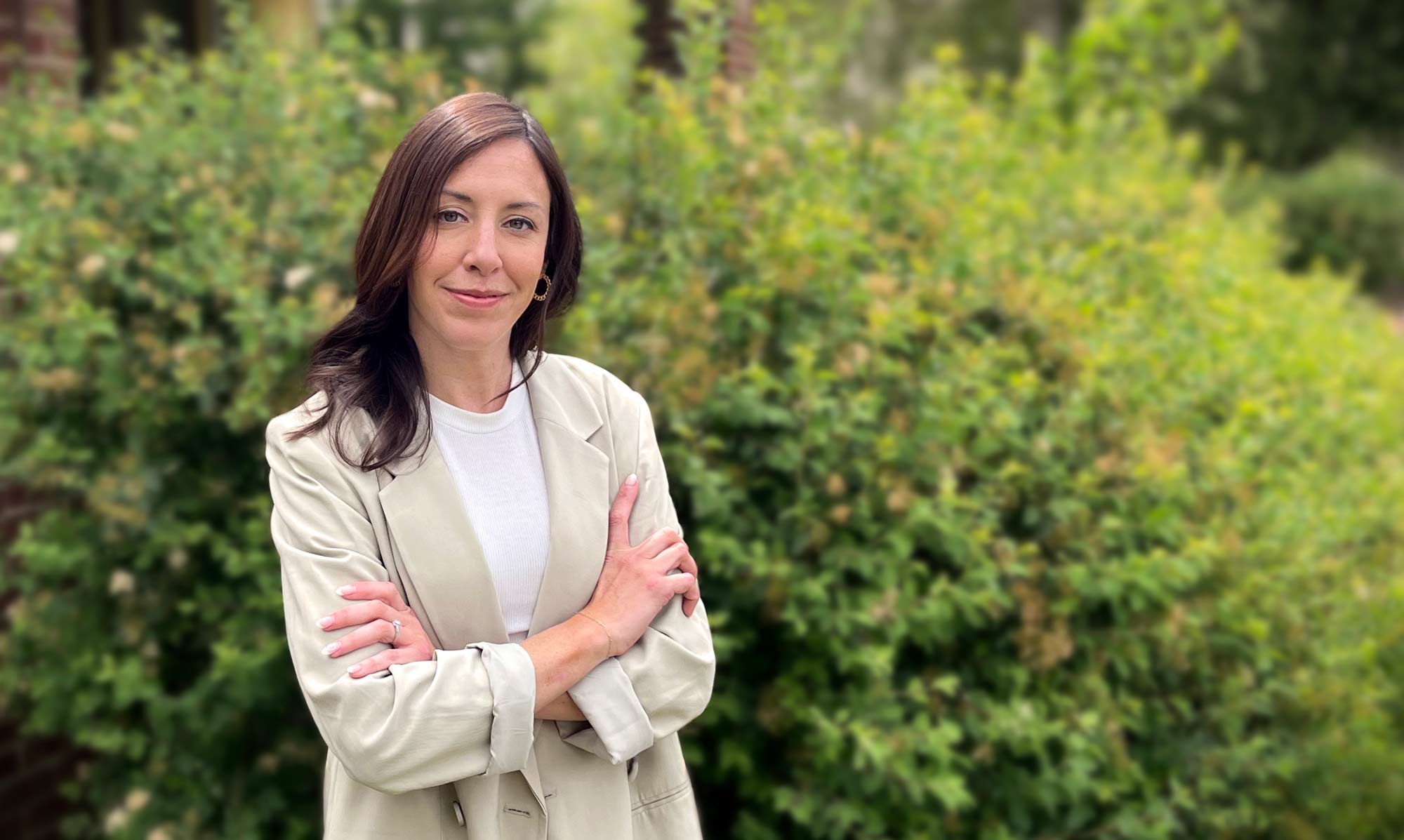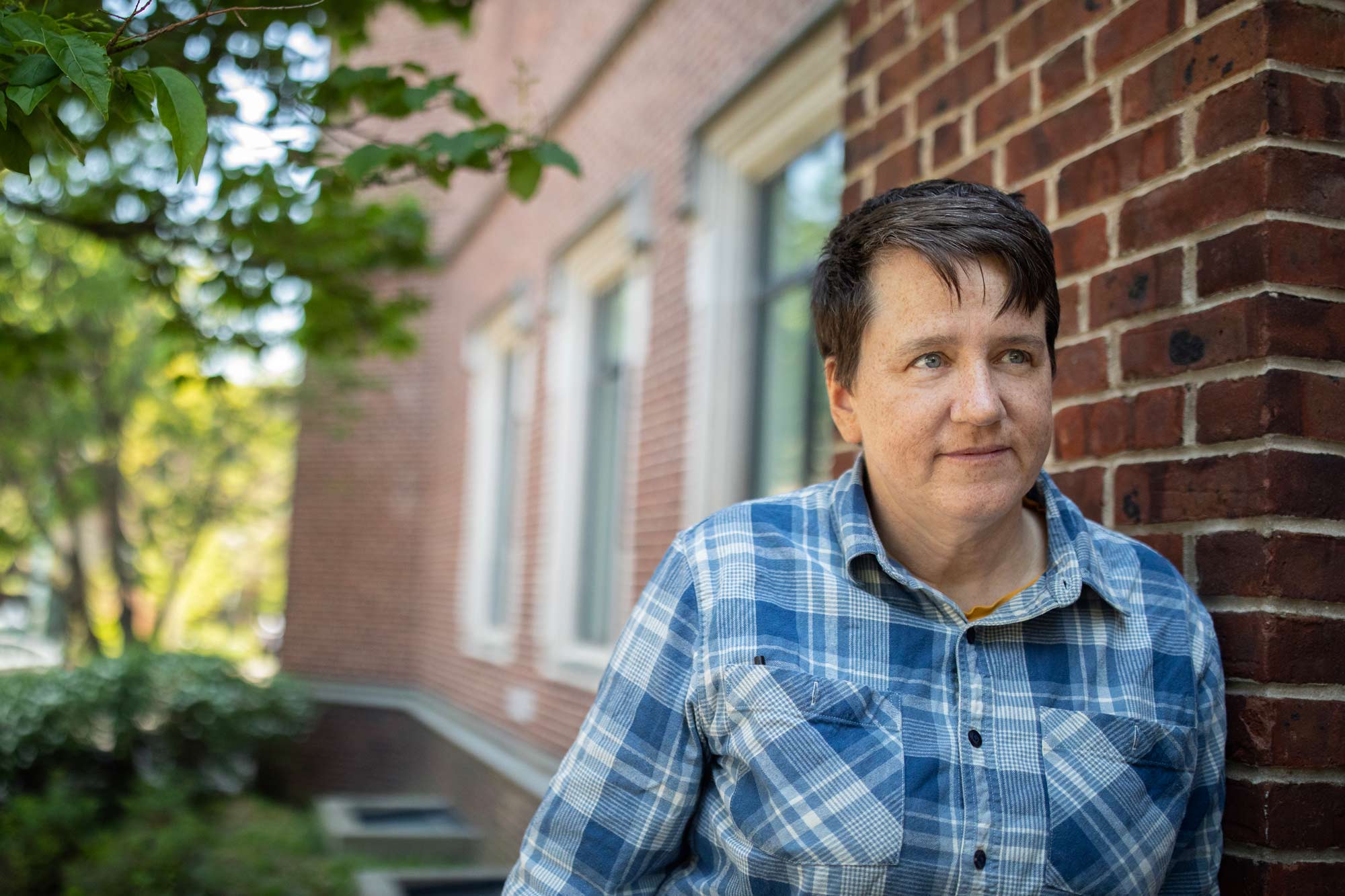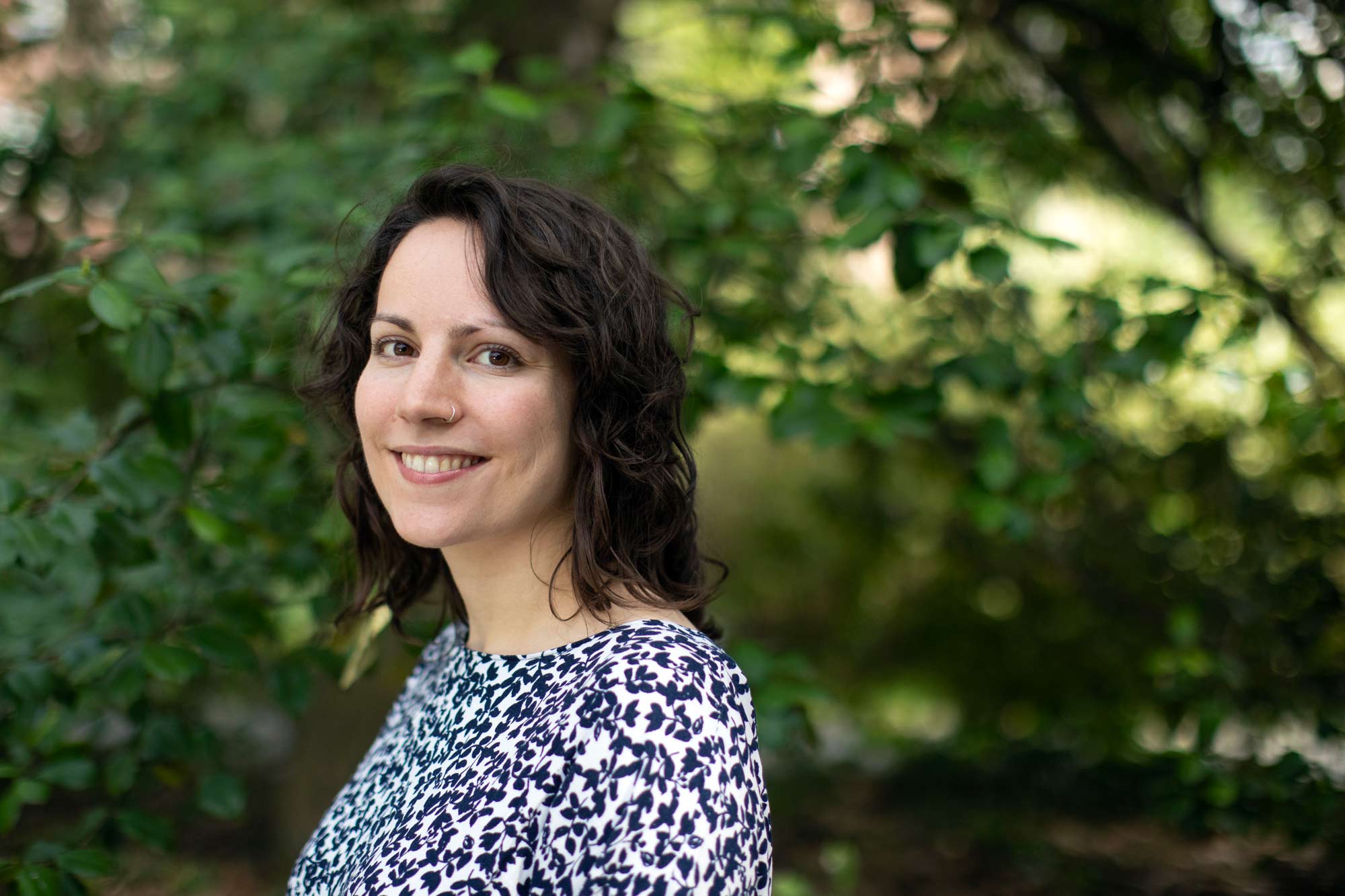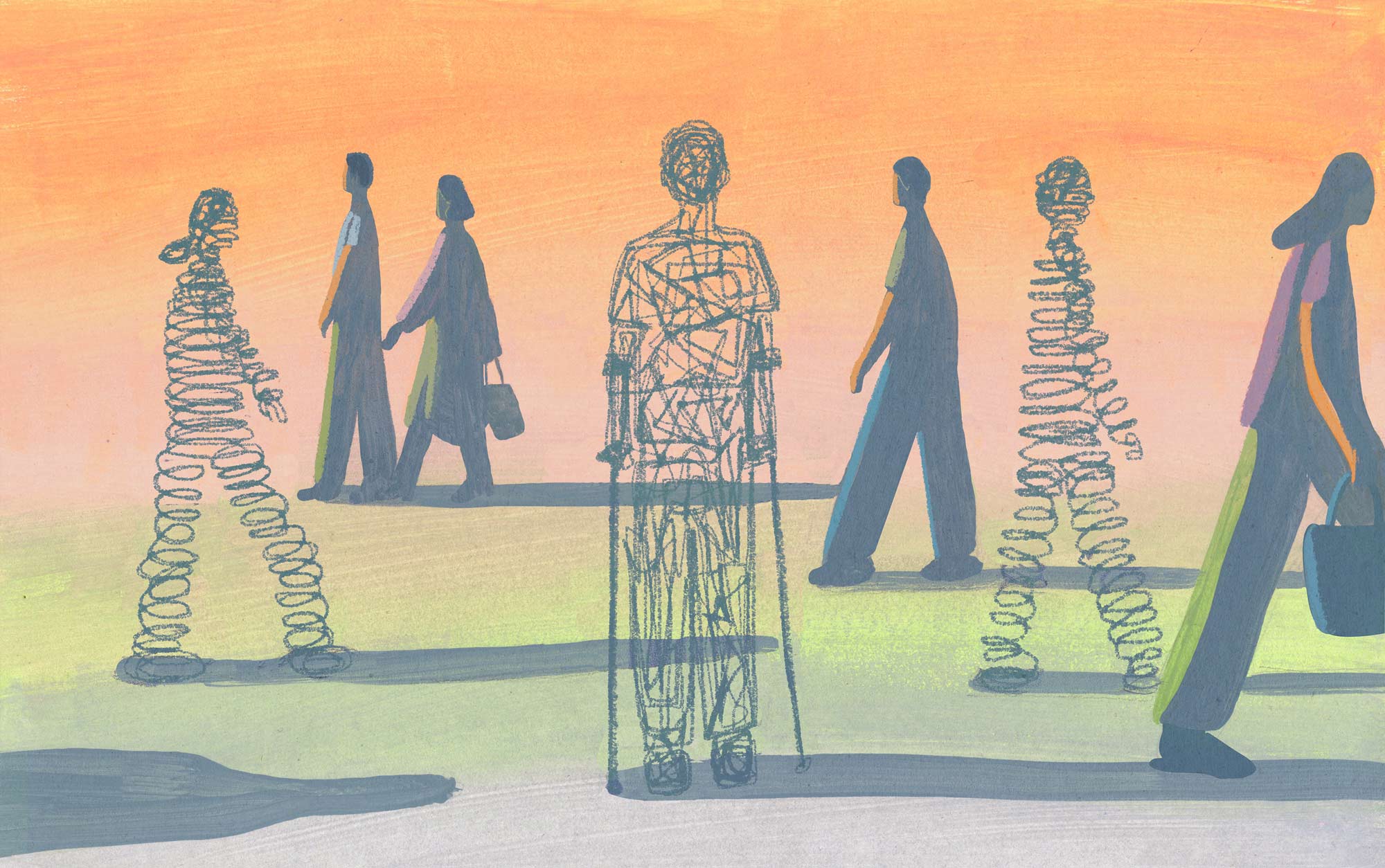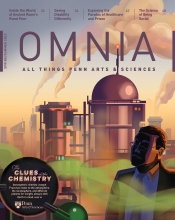“Today, I have no pain,” says Sara Purinton, a doctoral candidate in philosophy who deals with chronic pain in her arms and hands. “In certain ways, at least, I’m inhabiting an abled body.”
Millions of people wake up every day in bodies that are not “abled”—where mobility is impaired, sight or hearing is limited, where injury or disease has permanently altered function. In the United States, the wars in Afghanistan and Iraq have created nearly four million disabled veterans. More than 25 million Americans say they have long COVID, defined by a wide range of health problems.
The post-pandemic world also seems awash in exhaustion, anxiety, and depression; in 2021, 5.4 million people took the Mental Health America online screening test, a nearly 500 percent increase over 2019. And the population is aging, which brings its own loss of abilities.
“One of the truisms of disability is that if we survive long enough, we’ll all be disabled,” says Heather Love, Professor of English. Love is a scholar of gender and sexuality studies and queer studies whose interests expanded to disability studies around 2010. In 2019 she herself suffered a stroke that left her legally blind and unable to drive a car or to read ordinary print. “It can seem like a niche field, but I think those tools are really helpful in navigating what it is to have a body and be mortal.”
The pandemic has brought questions about disability and access to the fore, raising issues such as whether some of its effects might be considered disabilities and what it’s like to not be able to get to school, work, or to see family and friends.
A growing academic movement is looking at how disability is seen in history, art, and the world. It’s focused not only on increasing knowledge but on making a positive difference. “I think at the most basic level, it’s really about advancing the welfare of people with disabilities,” says Love. “And that can include everything from having access to a broader array of culture to reducing stigma to legal inclusion. There are a lot of things that are necessary to make it possible to thrive.”
Penn Arts & Sciences scholars are examining the history of disability in the United States—one of discrimination and advocacy, technical advances and failed fixes, paranoia and persistence. They’re highlighting how disability is represented and how to appreciate and accommodate difference. And they’re thinking about how (or if) disability can be defined, and how that identification affects individuals.
Beth Linker: History
The modern concept of disability is tied to the industrialized workplace and veteran welfare, says Beth Linker, Samuel H. Preston Endowed Term Associate Professor in the Social Sciences and Chair of the Department of History and Sociology of Science. During the Civil War, the government developed ratings so that soldiers got a payout depending on the severity of their disability, which was measured by their ability or inability to work.
It was also a time of discovery that caused some to think that science could solve everything. In Linker’s book, War’s Waste: Rehabilitation in World War I America, she argues that reformers were emboldened to push new ways of “rebuilding” disabled soldiers, relieving the nation of the burden of pensions and easing the decision to enter the war. The approach had positive results, such as the development of physical therapy. But Linker says it was inspired by a belief that these conditions could be cured, “and that doesn’t happen.”
Other movements sought to prevent disability. In her most recent book, Slouch: Fearing the Disabled Body, Linker traces how, at the beginning of the 20th century, poor posture went from being merely bad form to a feared pathology. What followed was an epidemic-style approach to a non-disease: the development of standards and ways to monitor posture through testing, and the sale of preventive goods like chairs and underwear.
Linker’s family ran a nursing home; growing up, she says, “disability seemed more the norm to me than the exception.” She became a physical therapist, then took a course on medical ethics. She eventually was encouraged to apply to a doctorate program at Yale in the history of science and medicine and enter the emerging arena of disability studies.
The field had begun, along with race and gender studies, following the struggles for civil rights and recognition in the 1960s. Disabled people, many of whom were polio survivors, began advocating for access to education and transportation and the ability to live independently.
Disability is the largest minority group.
Exposés of terrible conditions at institutions like Pennhurst State School and Hospital (originally known as the Eastern Pennsylvania State Institution for the Feeble-Minded and Epileptic) also drove the fight, and intellectual disabilities became a fuller part of the movement. It continues to expand. “Disability is the largest minority group,” Linker says. “It really encompasses a lot of different groups of people. And it’s sometimes hard to find common ground.”
After suffering a traumatic brain injury four years ago, Linker gained a more personal insight into the challenges of living with a disability in an ableist society. For 18 months she experienced vertigo and intractable headaches, leaving her largely unable to read, write, or use computers. “I have all the tools and connections. I have healthcare, I have an education. But I didn’t know who to go to, to get those accommodations, and it shouldn’t be that hard.”
“The medical system does very well at acute but it’s not so great with chronic long-term disabilities,” she continues. “In my mind, that’s a healthcare system that is inherently ableist. I’d just like to bring to the fore more understanding of the degree to which ableism informs our culture, our politics, our society. We live in this world that only is conducive to a very small slice of biological variation.”
Leah Samples: Systems
A 2016 study by the Johns Hopkins University School of Medicine found that most Americans regarded loss of eyesight as the worst condition that could befall them. “I was really interested in why blindness is set apart as a disability even into 2023,” says Leah Samples, a graduate student in history and sociology of science who is working to understand and amplify the experience of blind Americans.
As an AmeriCorps volunteer at an assistive technology center in Nashville, Tennessee, Samples saw the structural forces and issues with access—to healthcare, transportation, technologies—that shape life for many disabled Americans. She wanted to know why.
She interviewed 100 legally blind residents, asking them about their day-to-day life and what barriers they faced. “What really became clear to me was just how much discrimination blind Americans face, really unique to the experience of being blind,” she says.
Samples is continuing to learn about the everyday experience of blind people, as her doctoral research has sent her into the archives of charitable organizations as well as state welfare departments. She sees a pattern.
“Millions of dollars have been spent to rehabilitate and aid blind adults who were considered worthy,” she says. “The blind themselves frequently would see federal and state legislation as the key to full economic and social citizenship. Yet time and again, each new piece of legislation would pass, and blind people would continue to find themselves in a bind.”
She cites Title X of the Social Security Act of 1935, which provided matching federal funds to states who gave benefits to their blind citizens. But the money came with restrictions; the recipient couldn’t hold a job that made more than a certain amount of money and had to see a state-approved ophthalmologist, which often required an hours-long journey.
Samples’ experience and research have shown her that technologies can both liberate and oppress.
Additionally, new technologies were often hastily welcomed as magic-bullet solutions. After corneal transplants became widely available, for example, Indiana required that people be evaluated for the surgery in order to receive welfare.
Samples’ experience and research have shown her that technologies can both liberate and oppress, and she learned not to see anything as the ultimate fix. “It’s not that it’s wrong to want to cure,” she says. “The issue is when a singular technology or surgery takes over.”
Samples has mild cerebral palsy, and much of her childhood and adolescence were characterized by medical intervention, surgeries, and physical therapy appointments in a quest for minor improvements: “It really was a defining feature of my everyday experience, being enmeshed in these infrastructures.”
She’s planning another project that will be part history and part memoir, which she hopes will be a resource for families and organizations. “I’m going to show how trying to improve a body can be as exhausting and obsessive as a relentless search for a cure, that the systems we create have real-life consequences on people.”
Heather Love: Difference
Though minorities can be “hidden from history” in literature, says English Professor Heather Love, disability is everywhere. “Disability is actually very present in the history of literature, but it’s not represented realistically,” she says. “There’s no interest in the social fate of those characters. They’re used primarily as symbols—of evil, or frailty, or purity.”
In spring 2023, Love was awarded a prestigious Guggenheim Fellowship in the category of literary criticism. Her interest in disability studies is related to her work in gender, sexuality, and queer studies.
“Disability studies allows us to recognize that human difference itself has value, rather than being something to be eliminated or managed,” says Love, whose books include Underdogs: Social Deviance and Queer Theory and Literary Studies and Human Flourishing, which she co-edited with James English, John Welsh Centennial Professor of English. “Shifting the frame changes how we make laws, how we educate citizens, how we make decisions about healthcare—all those things.”
It’s a message she tries to impart in her Disability Narratives course, which starts with students reading classic literature that features disabled characters. The texts then turn to memoirs and novels by people with disabilities. “Rather than thinking about this as a tragedy, we really think about it as a difference,” she says. “This material can be really challenging and transformative for students.”
Disability studies allows us to recognize that human difference itself has value.
People are often ready to judge other people’s lives as being not worth living or unsustainable, Love says. “But of course, things feel very different from the inside. I think what I try to teach in that class is that we’re unknown to each other in ways that can’t be overcome so easily.”
She struggles to balance the recognition of human variety with being realistic and pragmatic about the struggles people have. The intellectual history of disability studies began with a social model that argued that the world causes disability—for example, not having ramps and other accommodations so that wheelchair users could move freely through the world.
“It’s like the environment itself is disabling because it doesn’t make space for people with physical and other differences,” Love says. “And that’s such an important piece of the movement, and it’s behind many key policies. But there’s a more recent wave of work that argues that we also have to recognize that people deal with pain and impairment.”
In the classroom and her work, she’s able to explore nuances, she says, “but I’m often aware of the tensions between that academic approach and passing laws in Congress or protesting. I think there’s a place for all of these.”
Sara Purinton: Definition
Who defines disability? “There are many medical definitions. There’s the legal sphere. There’s a social sphere. And these definitions obviously don’t perfectly track one another,” says Sara Purinton, a doctoral student in philosophy whose work focuses mainly on issues related to ethics, agency, and disability. “Deciding who should have the authority to define disability is complicated.”
Ultimately, though, one individual must move through the different spheres. “So, what happens when these contexts give different answers as to whether you count or not?” Purinton asks. “What’s unifying, if anything, all these various things that we call disabilities?”
Around the time Purinton started graduate school, she began experiencing chronic pain in her arms that left her unable to perform fine motor movements. She was shuffled among specialists and received a litany of different diagnoses. “I remember very distinctly this one doctor who was like, ‘Well, if it’s the fine motor movements that are causing the problem, just stop writing and typing.’”
She became interested in conditions such as long COVID and fibromyalgia, which are different from the common conception of disabilities: that they’re easy to identify, stable, and permanent.
Purinton has written about how conditions like chronic pain or illness can involve drastic fluctuations in what someone can do over time. “This kind of instability can lead to a distinctive challenge for how you think of yourself,” she says. “Part of who we are involves our goals, our aspirations, our commitments. But with a lot of these conditions, your future is very uncertain.”
It also leads to people who are uncertain whether they are disabled. Beyond that, some who see themselves as disabled will still not identify themselves that way to others, for many reasons.
“The fewer people that disclose, the more likely we’re just going to continue on with the same stereotypes,” Purinton says. “But it’s also hard to put that on the individuals who are subject to a lot of the stigma, to have to do this self-disclosure of something that can be very personal.”
Disability also brings with it more subjective, existential issues about how to think of yourself.
Philosophy can help with this problem of definition, says Purinton, “because one thing philosophy is good at is clarifying our concepts. But historically philosophy hasn’t been too good on questions of disability. The prevailing view from the last 2,000 years of what it means to be a human makes a lot of ableist assumptions, like thinking that the mark of the human is a certain kind of reasoning or cognitive ability. What happens if those abilities are impaired? What does it mean to be human?”
Beyond that, her goal is to help people make sense of their own personal challenges. “Disabled people face many material challenges,” she says. “But disability also brings with it more subjective, existential issues about how to think of yourself. I’m especially interested in how these two sources of difficulty intersect, and how we might resolve any tensions between them.”
